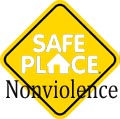Shalock
According to Bob Shalock, Quality of Life for people with a disability has the same aspects and relations as for every human being. The Quality of Life can be improved by involving the persons in making the decisions concerning their own life, and by fully including them in the community.
Shalock describes eight domains for Quality of Life. These domains are
- Emotional well-being: contentment, self-concept, lack of stress.
- Interpersonal relations: interactions, relationships, supports.
- Material well-being: financial status, employment, housing.
- Personal development: education, personal competence, performance.
- Physical well-being: health and health care, activities of daily living, leisure.
- Self-determination: autonomy, personal control, personal goals, choices.
- Social inclusion: community integration and participation, roles, supports.
- Rights: legal, human, respect, dignity, equality.
Compared with gentle teaching
For Shalock inclusion and self-determination are key words in the concept of Quality of Life. With Gentle Teaching we do support the principles of inclusion and self-determination, but it isn’t the central focus. If a person doesn’t feel safe with others, inclusion and self-determination may enhance his fear and loneliness, because his ‘choices’ will be based on fear and not on freedom and self-confidence.
That’s why in Gentle Teaching the central focus is on companionship and creating a circle of friends around each person. From there comes real inclusion and self-determination.
The eight domains of Quality of Life according to Shalock are a combination of inner feelings (like emotional well-being and physical well-being) and external conditions (rights, inclusion) and some are more or less in between (personal development, material wellbeing). This can be a good model to measure the outcome or to define targets in a personal plan, but is isn’t helpful to understand a person’s feelings en reactions.
External conditions will influence the experience of Quality of Life, but in a different way for each individual person. In Gentle Teaching we assume that the Quality of Life is the way we feel about our conditions. And these feelings are also the intrinsic source of all our behaviors. The eight basic values in the Quality of Life model developed in Gentle Teaching are all about feelings. Thereby this model can be used to better understand the behavior of a person and is can be used to help a person realizing his own aspiration regarding Quality of Life. Read more in the section on Quality of Life




